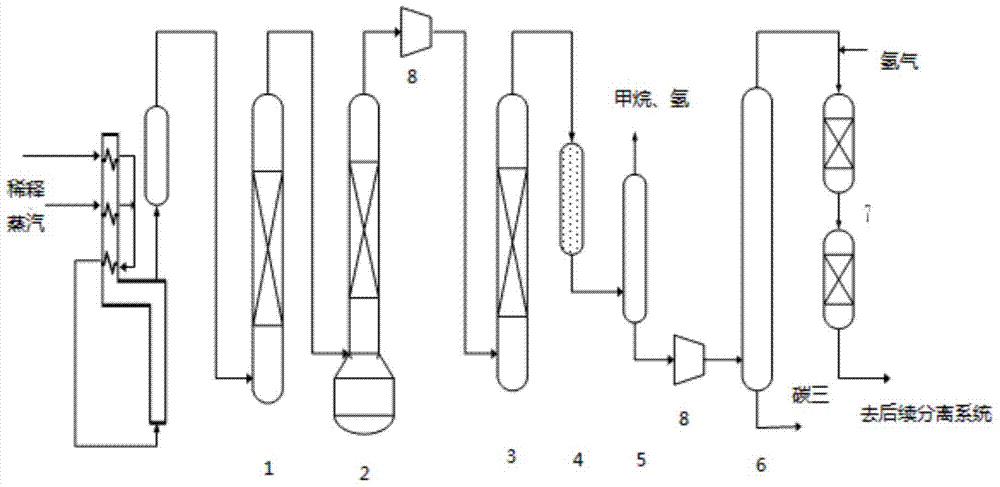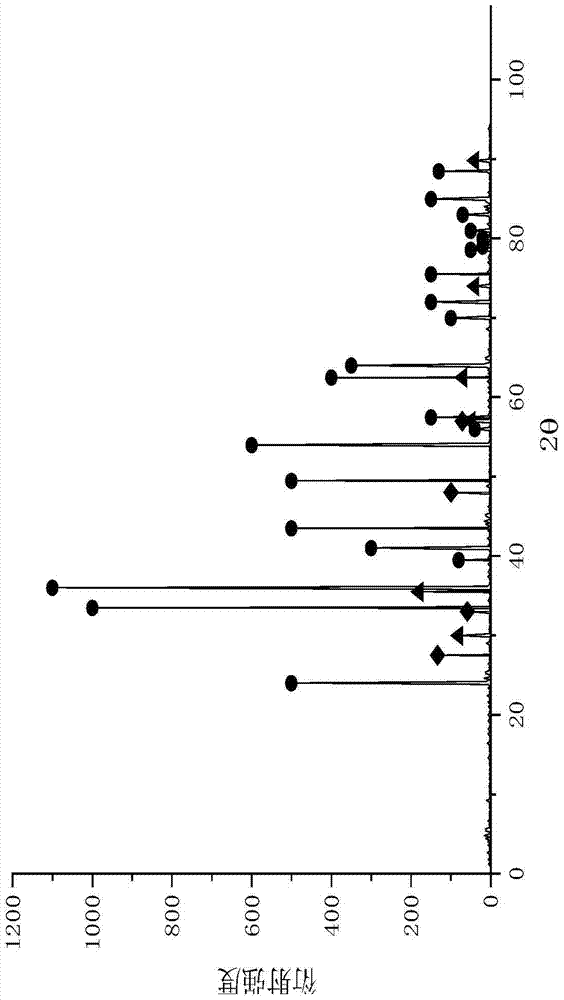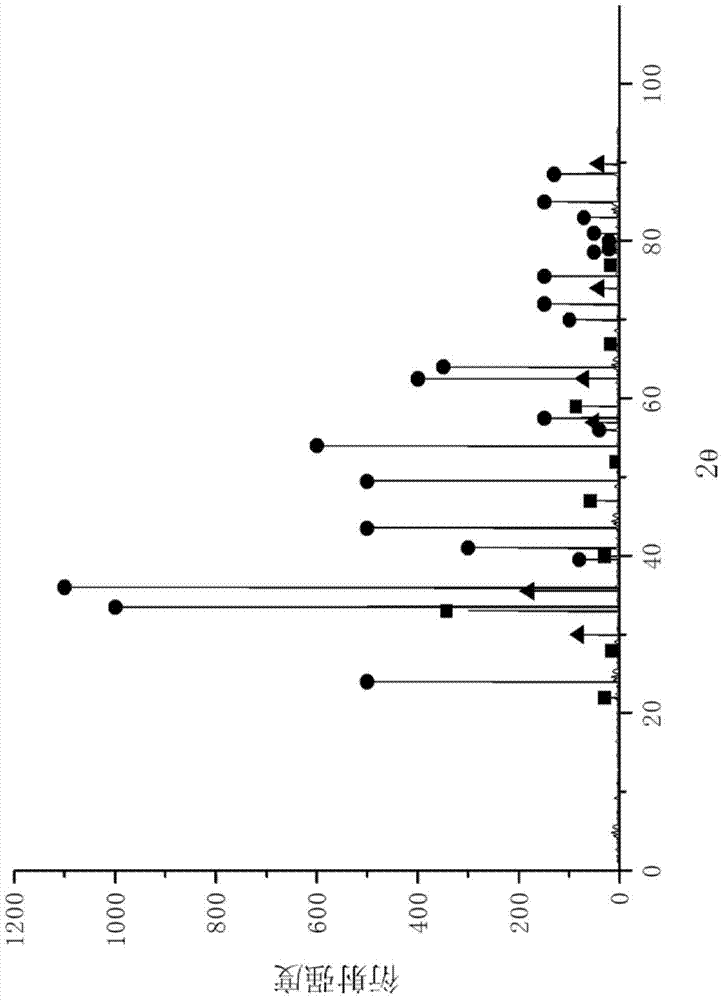C2 post-hydrogenation acetylene removing method
A technology for selective hydrogenation and acetylene, applied in the fields of hydrocarbons, chemical instruments and methods, hydrogenation to hydrocarbons, etc., can solve the problems of harsh conditions, high reaction temperature, low conversion rate of acetylene, etc., and achieve good operation flexibility and reactivity. Moderate and good ethylene selectivity
- Summary
- Abstract
- Description
- Claims
- Application Information
AI Technical Summary
Problems solved by technology
Method used
Image
Examples
Embodiment 1
[0085] Weigh a clover-shaped α-alumina carrier of Φ4.5×4.5mm. Take ferric nitrate, heat and dissolve it in 60ml deionized water, adjust the pH value to 2.5, impregnate the equal volume on the surface of the carrier at the temperature of 50°C, flip the carrier quickly for 6 minutes, let it rest for 30 minutes until the adsorption equilibrium, and age at 60°C for 30 minutes, then in In the oven follow the procedure: Dry the catalyst, and then use the temperature programming method to activate the catalyst. The activation procedure: Weigh lanthanum nitrate and impregnate according to the above preparation steps.
[0086] Before the catalyst is used, it is reduced with 40% hydrogen + 60% nitrogen in a reduction furnace, the reduction temperature is 300° C., the pressure is 0.5 MPa, and the reduction time is 4 hours. The catalyst is packed in an adiabatic bed reaction device.
[0087] The post-hydrogenation process is adopted, and the process flow chart is as attached figur...
Embodiment 2
[0092] At 50°C, the NaAlO 2 solution and ZrCl 4 The solution was stirred and mixed, then neutralized with nitric acid solution, stirred for 10 hours, and uniform Al-Zr particles were formed by co-precipitation. The resultant was filtered and the Na in it was washed with deionized water + and Cl - Ions, and then add an appropriate amount of polyvinyl alcohol with a mass concentration of 15% as a pore-forming agent, and knead it into shape. Dry at 130°C for 2h, and calcined at 650°C for 4h to obtain a Zr-Al composite support. The mass ratio of alumina to zirconia in the carrier is 4:1.
[0093] The catalyst was prepared with alumina-zirconia composite carrier. Take ferric chloride and potassium chloride, heat and dissolve them in deionized water, adjust the pH value to 2.0, impregnate the excess on the carrier at a temperature of 80°C, shake the beaker for 10 minutes, filter off the excess impregnating liquid, and place the catalyst in a water bath at 60°C Medium aging for...
Embodiment 3
[0100] The spherical alumina of Φ1.5 mm was weighed to prepare the catalyst. Dissolve ferric nitrate in deionized water, adjust the pH value to 3.0, soak the liquid at a temperature of 40°C, spray it on the carrier with a watering can, load it for 10 minutes to make the active components evenly loaded, and then follow the procedure in the oven: Dry the catalyst, and use the temperature programming method to activate the catalyst. The activation procedure: Obtain a catalyst dip.
[0101] Using the same method as the first step, take cerium nitrate, dissolve it, spray it on the surface of the catalyst, dry it, and roast it to obtain the final catalyst. Drying procedure: Roasting procedure:
[0102] Before the catalyst is used, it is reduced with 20% hydrogen in a reduction furnace, the reduction temperature is 340° C., the pressure is 0.5 MPa, and the reduction time is 4 hours. Catalyst XRD analysis after reduction is attached figure 2 shown. The catalyst is packed...
PUM
| Property | Measurement | Unit |
|---|---|---|
| specific surface area | aaaaa | aaaaa |
Abstract
Description
Claims
Application Information
 Login to View More
Login to View More - R&D
- Intellectual Property
- Life Sciences
- Materials
- Tech Scout
- Unparalleled Data Quality
- Higher Quality Content
- 60% Fewer Hallucinations
Browse by: Latest US Patents, China's latest patents, Technical Efficacy Thesaurus, Application Domain, Technology Topic, Popular Technical Reports.
© 2025 PatSnap. All rights reserved.Legal|Privacy policy|Modern Slavery Act Transparency Statement|Sitemap|About US| Contact US: help@patsnap.com



